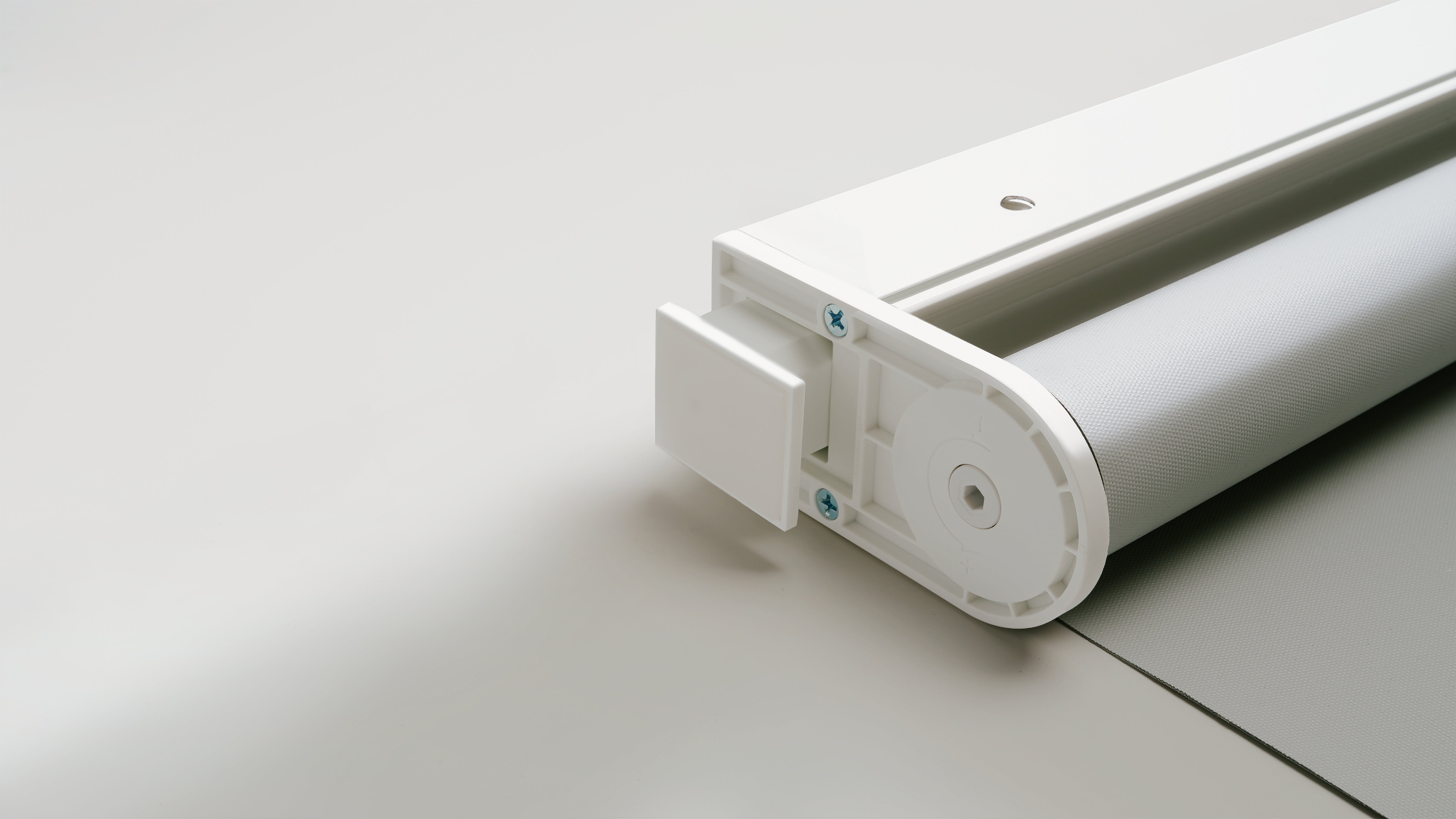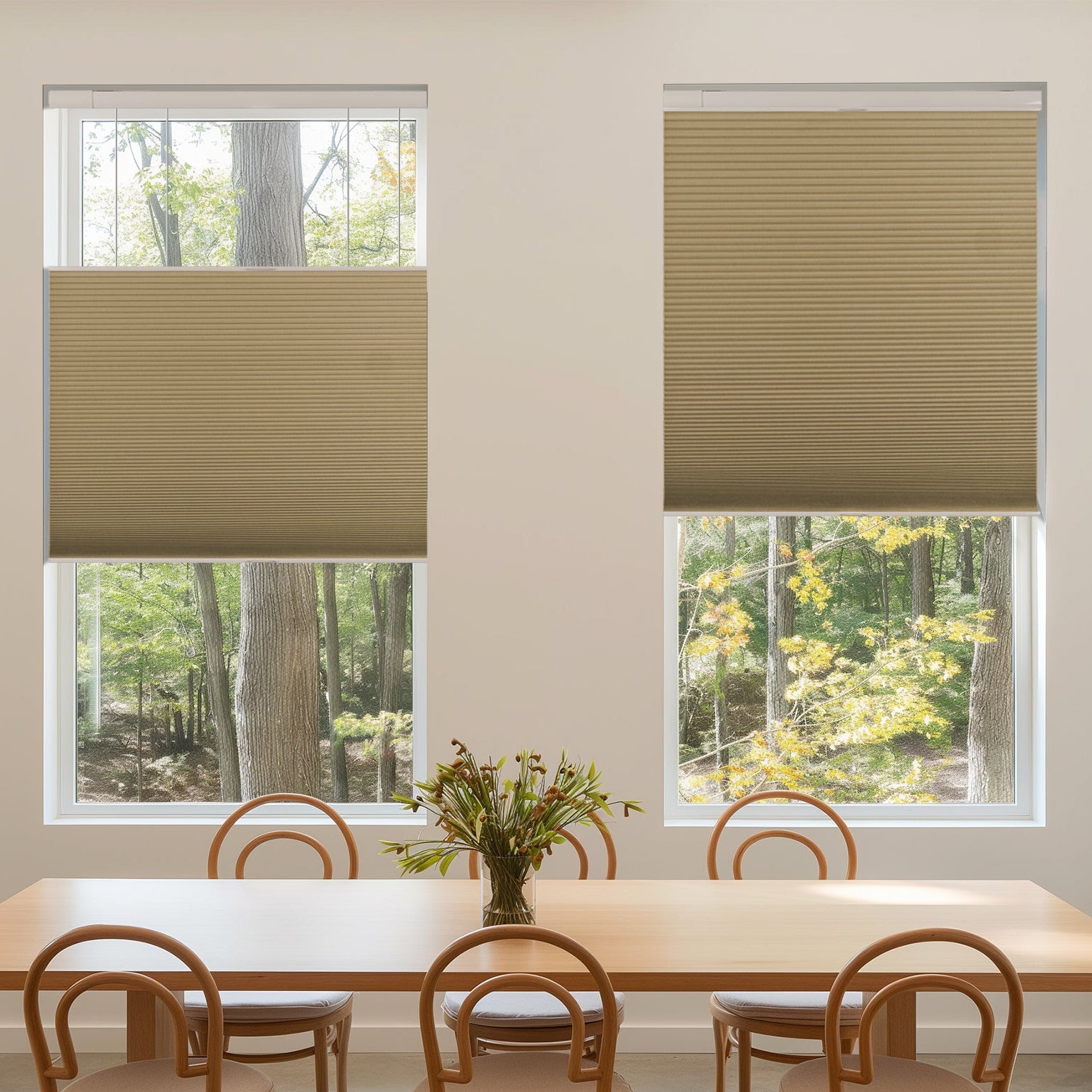No-Drill Cordless Blackout Roller Shades
9/16" Cordless No-Drill Blackout Cellular Shades

Easy install
Cordless No-Drill Day and Night Cellular Shades
No-Drill Blackout Waterproof Roller Shades
FAQs
What Are No-Drill Blinds?
How Exactly Do No-Drill Blinds Stay Up Without Screws?
What Surfaces Are Suitable for Installing Drill-Free Blinds?
Are No-Drill Window Treatments Safe and Secure, Especially Around Children/Pets?
What’s the Maximum Size Can No-Drill Window Coverings Safely Support?
Which Types of Window Blinds Can Be Installed Without Drilling?
We're expanding our no-drill range to offer maximum style flexibility! Currently, we provide no-drill roller shades and no-drill cellular shades. These styles are perfectly suited to tension rod due to their streamlined designs and manageable weight distribution.
Exciting news: We're actively developing no-drill Venetian Blinds (PVC or Vinyl Blinds), Roman Shades, and Zebra Shades – launching soon! Why not all types? Some complex mechanisms or heavier materials (like large wood blinds) require the absolute security of screwed brackets. Our focus is on styles where we can guarantee safe, reliable no-drill performance without compromising function or aesthetics.
Check our "No-Drill Collection" filter or product pages for real-time availability of your preferred style – and sign up for alerts to know when new types launch!
What Happens If the Tension Rod Slips? Is There a Warranty?
We stand behind our products. All no-drill mounting components are covered under our standard product warranty against manufacturing defects. If a component fails under normal use within the warranty period due to a defect, we will provide replacements.
If you experience failure, contact our support team with details and photos; we'll help diagnose the cause and determine the solution, which may include troubleshooting tips, replacement parts, or guidance on alternative mounting if necessary.
How to Measure for No-Drill Blinds and Shades?
Precise measuring is crucial for no-drill blinds to ensure a secure fit and proper operation. Follow these simple steps – we’ll guide you through:
Step 1: Measure Window Width (Side to Side)
Inside your window recess (the "frame"), measure the top width from left to right. If your measurement includes a fraction like 1/16" or 1/32", round down to the nearest 1/8".
*Examples to Help:
- If it’s 24 9/16", round down to 24 ½".
- If it’s 24 3/8", no rounding needed!
Step 2: Measure Window Height (Top to Bottom)
Measure in 3 places: left, center, and right from the top inside of the recess down to the sill. Use the LONGEST measurement and round up to the nearest 1/8”.
Step 3: Calculate Your Blinds Size When Ordering
Order Width=Window Width-1/4” (Deductions can vary slightly by blind style. Always check your product page or ask our team for confirmation!)
Order Height=Window Height (Use the height you rounded up in Step 2 exactly!)
Critical: Ensure frame depth is sufficient for the blind's headrail/brackets (min. 2 3/8" usually).













